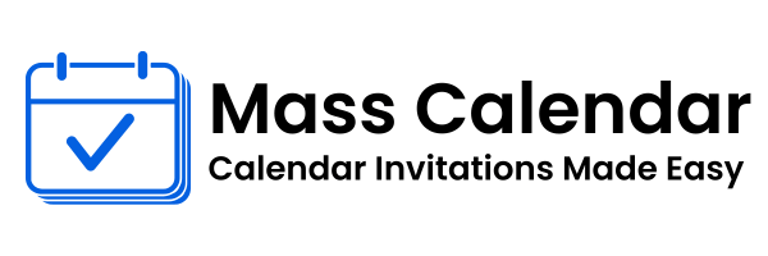How to Efficiently Manage Bulk Calendar Invites for Large Events and Meetings
As organizations become more digital and distributed, the task of coordinating calendars has evolved into a complex challenge. Sending a calendar invite to one or two people is easy. But when you need to reach 50, 500, or 5,000 people at once? That’s when you need a plan to send mass calendar invites efficiently.
BLOG
6/30/20252 min read


As organizations become more digital and distributed, the task of coordinating calendars has evolved into a complex challenge. Sending a calendar invite to one or two people is easy. But when you need to reach 50, 500, or 5,000 people at once? That’s when you need a plan to send mass calendar invites efficiently.
This blog explores methods and best practices to handle calendar coordination at scale—especially when organizing meetings, events, training, or internal town halls. Let’s break down how to stay organized, avoid common pitfalls, and get everyone on the same page without the chaos.
Why Calendar Invites Matter at Scale
Unlike emails or chat messages, calendar invites actively block out time on someone’s schedule. They come with reminders, links, and options to reschedule. For organizers, this makes them the most powerful tool for increasing event attendance.
When you send mass meeting invites, you eliminate the need for follow-ups or miscommunication. Everyone gets the same information at the same time—improving clarity and reducing administrative effort.
When You Should Send Bulk Calendar Invites
Here are a few situations that require bulk calendar scheduling:
Global all-hands meetings
Virtual training and onboarding
Investor calls with large audiences
Webinars or product demo sessions
Multi-region team syncs
All of these benefit when you send bulk calendar invites that include a fixed time, dial-in link, and clear agenda.
Sending Bulk Meeting Invites in Gmail
Using Gmail? Google Calendar offers a simple path to schedule at scale. You can:
Add up to 200 guests manually
Use Google Groups for easier access
Import .csv files with contact emails
When you send bulk meeting invites in Gmail, remember:
Keep the subject line specific
Avoid sending invites with blank bodies or missing links
Use Google Meet or integrated conferencing tools for reliability
Outlook Users: Managing Bulk Calendar Invites
Microsoft Outlook remains the go-to for enterprise scheduling. To send a bulk calendar invite in Outlook, you simply:
Create a new event
Add recipients (manually or via distribution list)
Insert meeting links (Zoom, Teams, etc.)
Enable RSVP tracking for accountability
Outlook also allows reminders, recurring invites, and follow-ups, making it ideal for internal reviews or board meetings.
Tips for Successful Large-Scale Scheduling
To streamline the process when you need to send multiple calendar invites, keep the following best practices in mind:
Prepare Contact Lists in Advance
Avoid typing emails one by one. Use structured lists in Google Sheets or Excel.Segment by Audience Type
Break invites into smaller, more personalized groups if possible (e.g., Sales, Marketing, APAC region).Add Context to the Invite
Include meeting goals, links, documents, and follow-up actions. This ensures participants know what to expect.Account for Time Zones
If you’re planning a global session, use “world clock” formats or choose a rotating schedule for recurring events.
Common Pitfalls When Sending Mass Calendar Invites
Here are mistakes to avoid:
Not specifying the format (virtual/in-person)
Sending duplicate invites
Not confirming the calendar client compatibility (.ics vs. native)
Skipping reminders for key attendees
Planning ahead prevents these small oversights from becoming larger issues.
Conclusion
Calendar scheduling, especially at scale, is both an art and a science. As your audience grows—internally or externally—you’ll need to move beyond one-off invites and adopt structured workflows.
By understanding how to send bulk calendar invites, properly using Gmail and Outlook, and avoiding common errors, you can ensure higher participation and better meeting outcomes.
Whether you're sending internal briefings, client demos, or mass webinar invites, the way you handle calendar communication matters. Get it right, and you'll create smoother experiences for everyone involved.
MassCalendar.in
Send Bulk & Mass Calendar Invites Instantly
CONTACT
Meetings
+44 (0) 203 916 5117
© 2025. All rights reserved.
Help?
